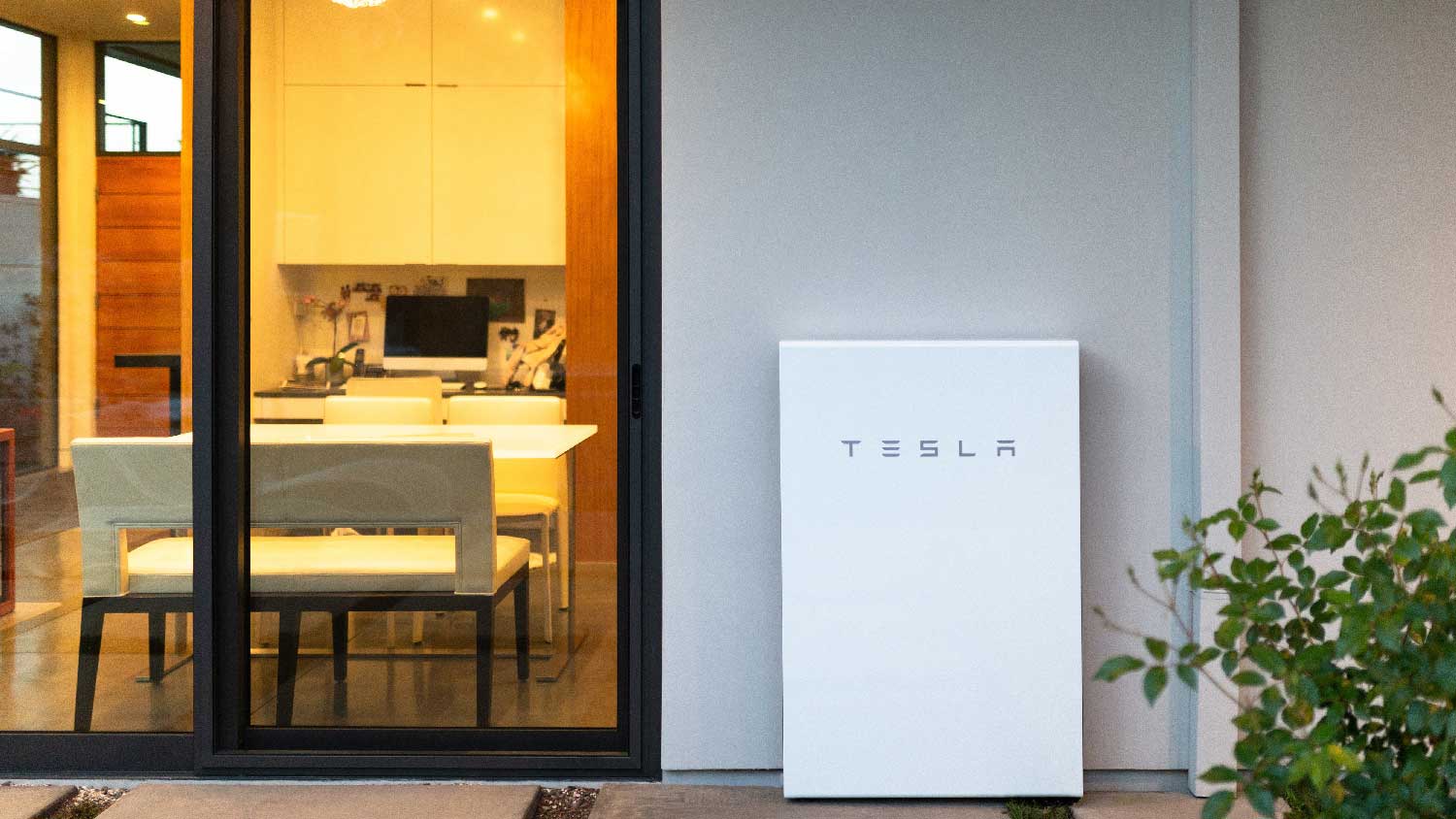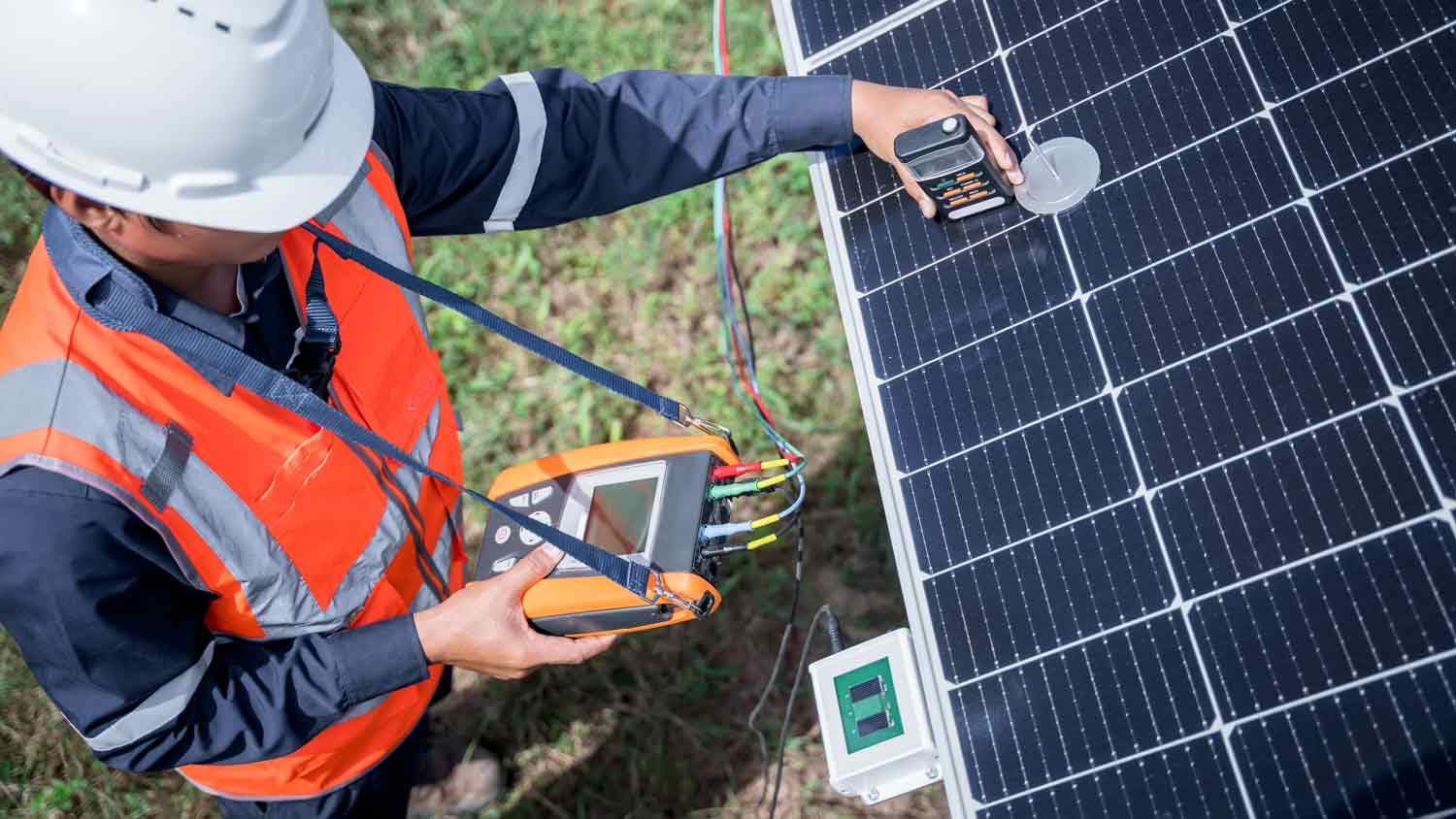
Discover the Tesla Powerwall installation cost, including average prices, cost factors, and tips to help homeowners budget and save on their Powerwall project.
Keep solar panels operating smoothly by regularly cleaning them


Solar panels are a proven source of clean energy for your home that can pay for themselves over and over again. One of the most attractive aspects of installing solar panels for a homeowner is that they require very little maintenance and can last upward of 30 years.
However, after being exposed to the outdoor elements season after season, cleaning them to keep them running at maximum efficiency is helpful. Use this step-by-step guide to learn how to clean solar panels, perform a deeper clean if needed, and discover some maintenance tips to extend their life span and keep producing solar energy for years to come.
Safety note: If your solar panels are installed on the roof, always take extra precautions when cleaning them, such as enlisting the help of a friend or family member to supervise and ensure your ladder is sturdy.
Dirt, dust, leaves, and other debris readily accumulate on solar panels. The mounting location and angle can help prevent too much buildup, and a pitch of as little as 5 degrees is enough to help rainwater clear debris. However, debris can still stick and build up over time.
Certain types of debris, like bird droppings and wet leaves, can stick or dry onto the panels and require more than a good rainstorm to wash away. If you live in an area with a dry season, there might not be enough rain to clean the panels for months.
Solar panels work by absorbing light from the sun, but stuck-on dirt and debris block sunlight and reduce the efficiency of your system by as much as 5% to 20%. Ensuring your solar panels are clean will help keep your solar energy production at peak performance.
Cleaning your solar panels, repairing components, and trimming surrounding trees will keep your system operating smoothly. Check regularly for debris and tree branches and get a professional inspection every year. A solar panel repair pro can get your system in tip-top shape.
Cleaning frequency depends on the conditions where you live. An occasional rain shower is enough to keep solar panels clean. On the other hand, if you live in an agricultural area where frequent dust storms, leaves, or branches can accumulate on the panels, you should clean the panels every six months and do a deeper cleaning once a year.
There may be times of the year when you need to clean them more regularly. For example, if you live where there isn’t much rain for several months or frequent wind storms in the fall or spring blow debris onto the panels, you’ll need to do seasonal cleaning. The owner’s manual and warranty for solar panels sometimes include cleaning frequency recommendations.
The first safety consideration should be whether you should clean the panels yourself. If you have a particularly steep or high roof, consider hiring a local solar panel repair pro who includes cleaning as part of their services. These companies have the equipment to access the rooftop safely. Other safety considerations to keep in mind:
Check for loose wiring or damaged panels before you begin
Turn off the power
Wear gloves
Wear nonslip footwear
If you use a ladder, have someone hold it
If possible, clean panels from the ground
Don’t clean panels during the hottest part of the day
“If your solar panels are on your roof, it’s necessary to take safety precautions or put your trust in a certified solar panel technician. If you're performing a DIY cleaning and notice any cracks, chips, or other blemishes, it’s recommended that you stop and contact your solar contractor.”
— Mike Naughton, CEO and Founder of Integrity Energy, Cleveland, OH
Solar panel cleaning can take time and a gentle hand. Be patient and methodical, and your panels will be sparkling clean and ready to absorb light.
The steps to turn off the power to solar panels vary by the type of system, so read the owner’s manual first. The process sometimes involves turning off the AC and DC breakers separately or flipping the disconnect switch. Some systems require additional steps, such as turning off the breakers where the system connects to the home. After cutting the power, the system needs time to fully power down and discharge, which can take five to 10 minutes.

Start with a light clean before removing regular dirt and debris or starting routine solar panel maintenance. You’ll only need your garden hose, as the high pressure from a pressure washer can scratch the glass surface of the panels. Simply spray down the solar panels with the garden hose and let them dry out in the sun.
If you haven’t cleaned your panels in a while, if they’re soiled, or if there’s a buildup of sticky substances, you may need a deeper clean.
When choosing tools and materials, pick a mild cleaning solution (such as dishwashing detergent) to avoid exposing the panels to harsh chemicals. Also, opt for a soft-bristle brush or squeegee to prevent scratching the panels (which can result in decreased energy production).
The next step is to mix the dishwashing detergent in a water-filled bucket to form soapy water. That’s right: Cleaning your high-efficiency solar panels follows the same cleaning steps as washing your car.
Hose down the dirty panels with a garden hose, ensuring the water isn’t too hot or cold. Then, scrub the soapy solution onto the panels using the brush or squeegee.
For more targeted spots, such as tree sap or bird droppings, use a little more force with the soft side of the kitchen sponge.
Once the scrubbing step is complete, rinse away the cleaning solution until the water runs clear, and let the panels air dry in the sun. Take this opportunity to inspect your now-clean solar panels for any signs of damage, like small cracks in the panes.
Use a leaf blower during the fall to clear the panels from leaves and twigs.
Trim back landscaping and greenery that may be growing over the solar panels.
Inspect the panels occasionally and tighten any loose parts.
Check for cracks in the pane’s glazing and sealing.
If you notice any broken parts, weigh the cost to repair the solar panels versus replacing them.
Install an energy monitoring system to track usage and determine if your panels operate at maximum efficiency and meet your expectations for solar panel ROI.
Avoid harsh chemicals or abrasive cleaners, and use a soft brush or cloth that won’t scratch the panels’ surface.
Avoid a pressure washer and opt for a steady stream of water from a hose.
To avoid extreme temperature changes that could break the glass, avoid washing panels during the hottest part of the day.
If you prefer to hire a professional, there are plenty of solar panel cleaning services available. Hiring professional cleaners is a good idea if you have a steep roof on which the panels are installed, if they’re particularly soiled, or if you want to guarantee a regular cleaning schedule.
The average cost of hiring a professional solar panel cleaning service is about $10 to $20 per panel, but sometimes they charge a flat rate of $300 to $630. Depending on the manufacturer, they may offer you a service plan when you purchase the panels, as well as an option to set up a recurring annual service appointment to inspect them.
You should strongly consider hiring a pro when:
You live near a heavily forested area, and there are trees blocking access to your solar panels
There is excessive dirt and buildup that will require special tools or extra time to clean
You are not confident in your ladder safety, or the location of the panels is difficult to reach
If your system requires some fixes, solar technicians and installers are among a few of the pros who repair solar panels.
From average costs to expert advice, get all the answers you need to get your job done.

Discover the Tesla Powerwall installation cost, including average prices, cost factors, and tips to help homeowners budget and save on their Powerwall project.

Discover the average solar panel inspection cost, what impacts pricing, and how to save. Get expert tips to keep your solar system efficient and safe.

Get a detailed estimate of solar farm costs. Learn about average prices, key cost factors, and ways to save when planning your solar farm project.

Do solar panels damage roofs? We’re breaking down the different ways damage can occur post-installation and how to avoid issues.

What direction should solar panels face? South-facing panels work the best in the U.S., but that’s not the only option. This guide will help you decide.

Solar farms can be profitable, but knowing exactly how to get the most out of your solar farm’s ROI is key to its success. Keep reading to learn more.